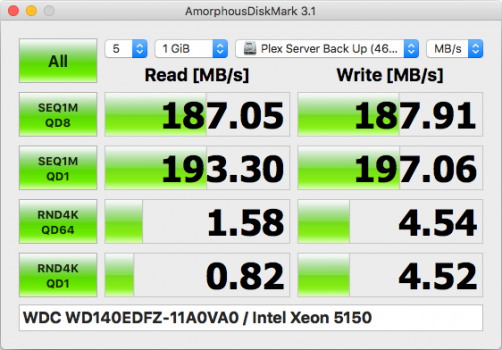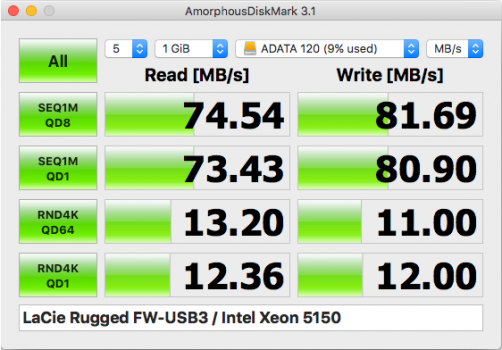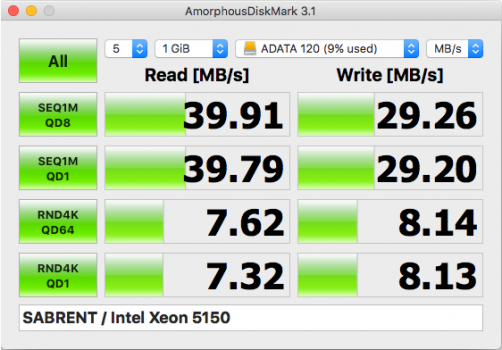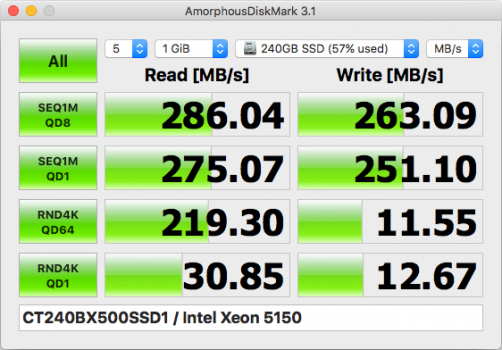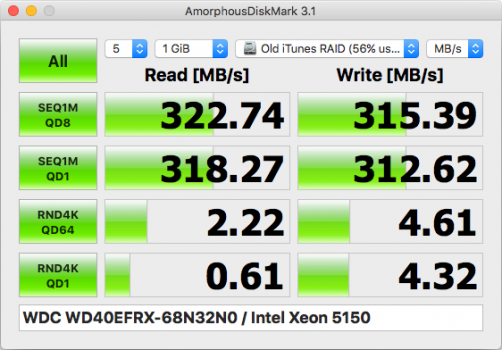Just trying to wrap my head around this and be sure I'm really correct with the math here. It looks to me that SATA speeds are measured in bits not bytes, but the 400/800 for FireWire is bytes. This would mean FireWire 800 is about 6GB/s versus SATA II being only 3GB/s. I understand some of this may be sucked up by "overhead" so you might be losing 10-30 Megabytes/s but FireWire on paper seems a lot faster than SATA II.
I ask mostly because my iMac's SATA is no good at all anymore and I really don't want to bother cracking into it now that I have my SSD armada if a FireWire 800 external enclosure is going to be faster or even the same. I do not know what my enclosure's ratings are though other than it has a 8MB cache so I'm not sure what effect this will have on the speed. It is also a bus powered enclosure with option for DC mains power.
I ask mostly because my iMac's SATA is no good at all anymore and I really don't want to bother cracking into it now that I have my SSD armada if a FireWire 800 external enclosure is going to be faster or even the same. I do not know what my enclosure's ratings are though other than it has a 8MB cache so I'm not sure what effect this will have on the speed. It is also a bus powered enclosure with option for DC mains power.


